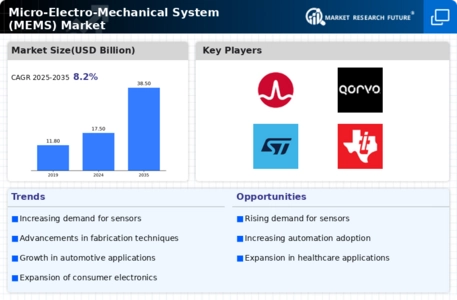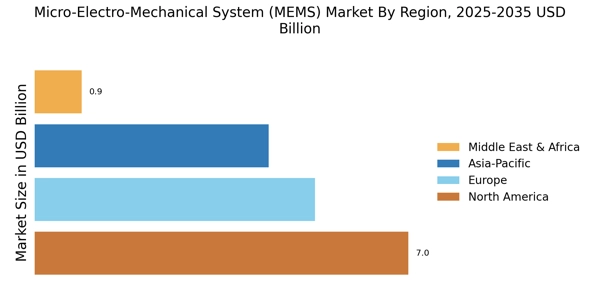Leading market players in the global model-based enterprise industry are characterized by their extensive R&D efforts, technological advancements, and strategic collaborations. These players continually strive to innovate and enhance their product portfolios to maintain a competitive edge.
Key strategies include mergers and acquisitions, partnerships, and product launches to capitalize on emerging market developments and meet evolving customer demands. Additionally, a focus on expanding their global footprint and strengthening distribution networks remains paramount.
The competitive landscape of the micro-electro-mechanical system industry is dynamic, with players vying for market share through differentiation and offering customized solutions tailored to specific applications. As the demand for MEMS devices continues to grow across various sectors, competition among market players intensifies, driving further innovation and market expansion.
Major players in the micro-electro-mechanical system market, including Analog Devices, Inc, Broadcom, Goertek Microelectronics Inc, Hewlett Packard Enterprise Development LP, Honeywell International, Infineon Technologies AG, Qorvo, Inc, Robert Bosch GmbH, STMicroelectronics, TDK Corporation, Texas Instruments, and others, are attempting to increase market demand by investing in research and development operations.
Analog Devices Inc (Analog Devices) specializes in designing, manufacturing, and distributing analog, mixed-signal, and digital signal processing integrated circuits (ICs) catering to diverse industries, including instrumentation, aerospace, defense, consumer electronics, healthcare, and automotive sectors.
The company employs various sales channels, including direct sales, independent representatives, distributors, and online platforms. With manufacturing facilities located in the US, the Philippines, Ireland, Thailand, and Malaysia, Analog Devices serves a global clientele spanning across the Americas, Europe, Africa, and Asia-Pacific regions. Headquartered in Wilmington, Massachusetts, USA, Analog Devices maintains a strong presence worldwide, focusing on innovation and customer-centric solutions.
Broadcom Inc. (Broadcom) stands as a technological enterprise specializing in the conception, advancement, and provision of a diverse assortment of semiconductor and infrastructure software solutions. Its portfolio spans storage adapters, controllers, integrated circuits (ICs), wireless, wired, and optical merchandise.
Moreover, the corporation furnishes mainframe and enterprise software alongside cybersecurity resolutions emphasizing automation, methodical cybersecurity, and industrial automation. These offerings cater to a broad spectrum of fields, including telecommunications, data centers, handheld gadgets, and high-speed internet connectivity.
Broadcom distributes its products through an expansive network involving resellers, subcontractors, makers of original equipment, and direct sales routes. With a global presence stretching across North America, Asia, Europe, the Middle East, and Africa, Broadcom conducts its business from its central hub nestled in San Jose, California, USA, maintaining a distinguished position within the technological domain.

















Leave a Comment